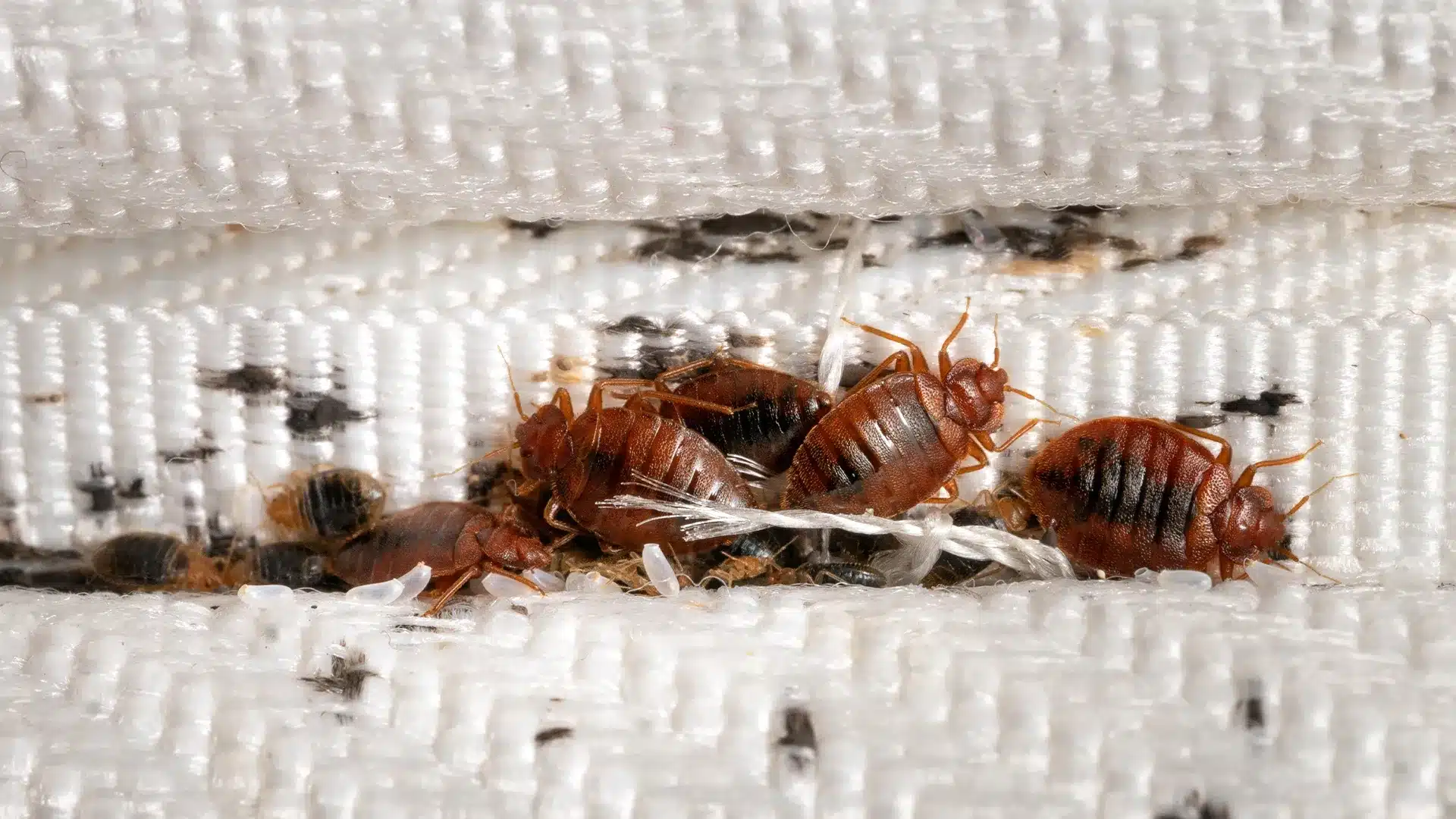Premier Bed Bug Exterminator: DC Exterminator for Effective Treatment
Wiki Article
Exploring the Science Behind Bed Insect Warmth Treatments as a Lasting Parasite Administration Strategy
In the world of pest management, the quest for lasting and reliable solutions stays a consistent pursuit. One such method that has obtained traction in the last few years is making use of heat therapies to combat bed bug infestations. By using the science behind thermal death points for these consistent pests, warmth treatments use an appealing option to typical chemical-based approaches. The intricacies of how heat properly removes bed pests and the broader ramifications for sustainable pest administration techniques make this a topic worth exploring additionally.Bed Pest Warm Therapy Process

Thermal Death Factor for Bed Bugs
Exposing bed bugs to elevated temperature levels beyond their thermal tolerance variety is important for attaining effective elimination in warm therapy procedures. The thermal death point for bed bugs describes the temperature level at which these bugs can not endure. Research suggests that bed bugs begin to perish when revealed to temperature levels over 113 ° F(45 ° C) for a sustained period. As the temperature increases, so does the death price of bed pests. At around 118 ° F(48 ° C ), bed insects begin to pass away swiftly, with a death rate of nearly 99% within mins of direct exposure. This demonstrates the sensitivity of bed bugs to heats and highlights the effectiveness of heat treatments in removing invasions. By getting to and keeping temperatures over the thermal death factor for bed pests, bug monitoring specialists can guarantee comprehensive elimination of bed insect populations, consisting of hard-to-reach locations where chemical treatments may be much less effective. Recognizing the thermal death point for bed insects is vital for carrying out successful heat treatment methods and achieving lasting parasite monitoring results.Advantages of Heat Treatments
Having actually established the crucial thermal fatality factor for bed bugs, it is imperative to here are the findings now discover the considerable benefits that heat treatments supply in successfully eradicating these durable parasites. One of the main benefits is that heat can permeate deep right into fractures and crevices where bed bugs hide, making sure that also the most hard-to-reach areas are heated up to deadly temperature levels.Additionally, warmth treatments are eco friendly and non-toxic, making them a sustainable bug monitoring strategy. Unlike chemical pesticides, heat treatments do not leave unsafe deposits that can pose risks to human health and wellness or the atmosphere. This facet is specifically important in sensitive environments such as medical facilities, institutions, and houses where chemical usage might not be preferable.
In addition, warmth treatments have a high success rate in getting rid of bed pest problems in a solitary therapy, reducing the need for multiple gos to and reducing disruption to occupants. This efficiency not just conserves money and time however likewise offers assurance to those dealing with bed bug troubles.
Performance of Warm Treatment

Research studies have continually shown the effectiveness of heat treatments in attaining a high price of bed bug mortality. Correctly carried out warmth therapies can get to all the crevices and cracks where bed bugs may be harboring, guaranteeing a thorough approach to extermination. Furthermore, heat therapies have the included advantage of eliminating bed pest eggs, which are usually immune to traditional chemical therapies. On the whole, the performance of warmth therapies in removing bed insect infestations makes them a lasting and trusted bug administration technique.
Sustainable Pest Management Conveniences
Carrying out lasting bug administration techniques uses long-term advantages for both the setting and public wellness. By making use of approaches such as warm treatments for parasite control, we can minimize the dependence on hazardous chemical pesticides that can have unfavorable results on ecological communities and human health and wellness - DC exterminator. Lasting bug administration approaches aid in maintaining biodiversity by targeting specific pests without harming non-target organisms, thereby maintaining a balanced ecosystem
Additionally, sustainable pest management techniques add to the overall wellness and health of the public. By reducing exposure to poisonous chemicals made use of in standard insect control methods, warmth treatments offer a safer choice for bug administration in residential, business, and public areas. This reduction in chemical use likewise helps in protecting against chemical residues from infecting air, water, and soil, guarding environmental quality.
Final Thought
In conclusion, bed pest warm therapies have been revealed to be a efficient and lasting insect monitoring technique. The thermal fatality point for bed insects makes them susceptible to warm therapies, which have various benefits over conventional chemical therapies. pop over to this web-site The effectiveness of warm therapies in eliminating bed insect infestations while lessening environmental impact highlights the possibility of this method as a lasting service my latest blog post for insect control.The bed pest warm therapy procedure entails raising the temperature level within plagued locations to a level that properly eliminates bed bugs and their eggs. By getting to and keeping temperature levels above the thermal fatality factor for bed pests, pest administration specialists can guarantee extensive elimination of bed insect populaces, including hard-to-reach areas where chemical therapies might be much less effective. One of the main advantages is that warmth can penetrate deep right into fractures and crevices where bed pests conceal, making certain that even the most hard-to-reach locations are heated to deadly temperature levels. Unlike chemical therapies that might leave behind immune populations, warmth treatments provide a non-toxic and ecologically pleasant solution that can penetrate deep right into furniture, wall surfaces, and various other hard-to-reach areas where bed pests conceal.
The thermal fatality point for bed bugs makes them susceptible to warm treatments, which have many benefits over traditional chemical therapies.
Report this wiki page